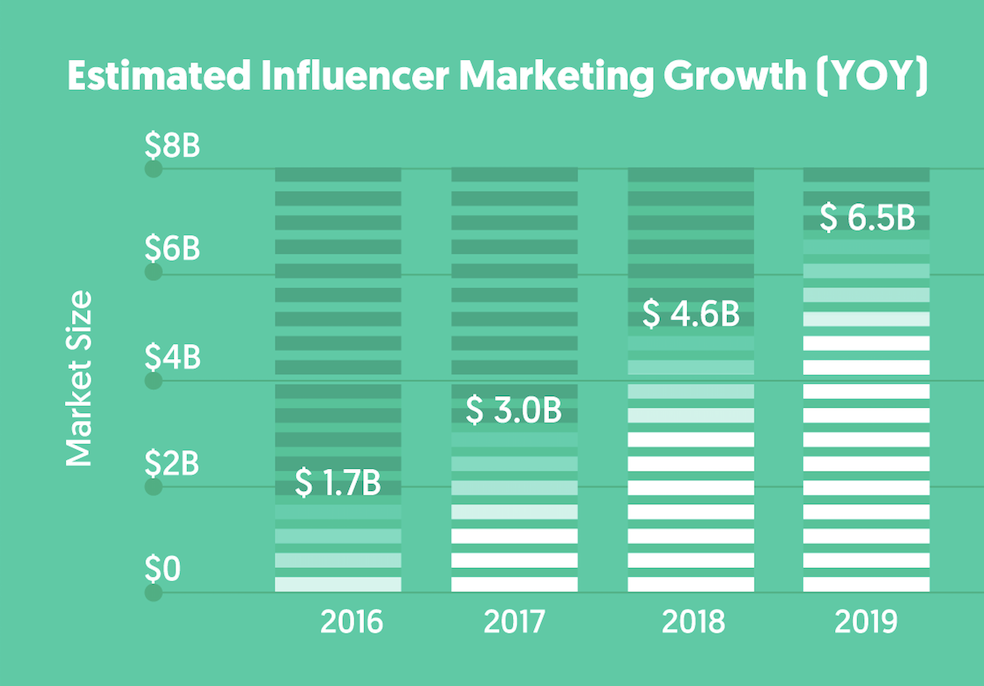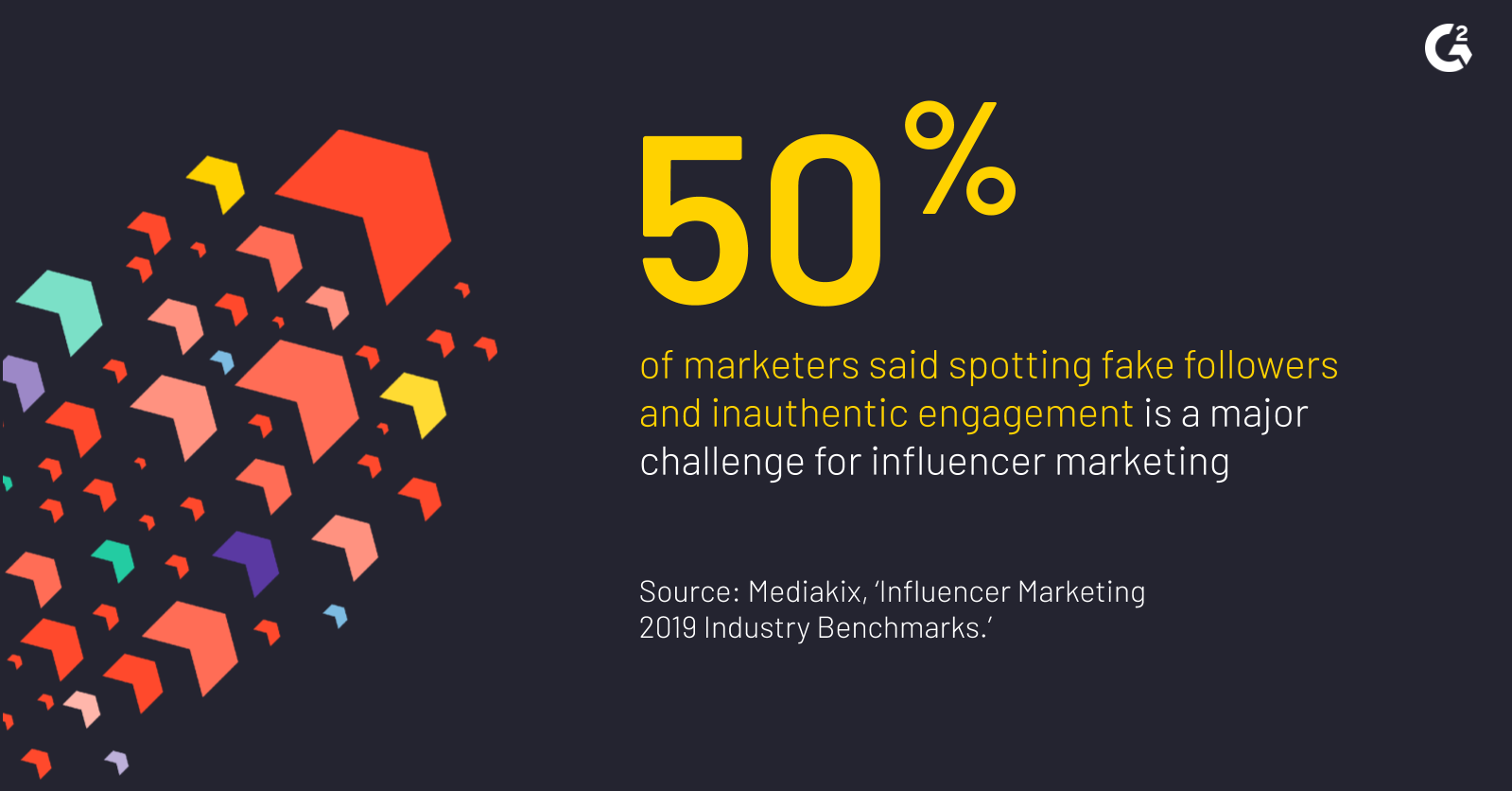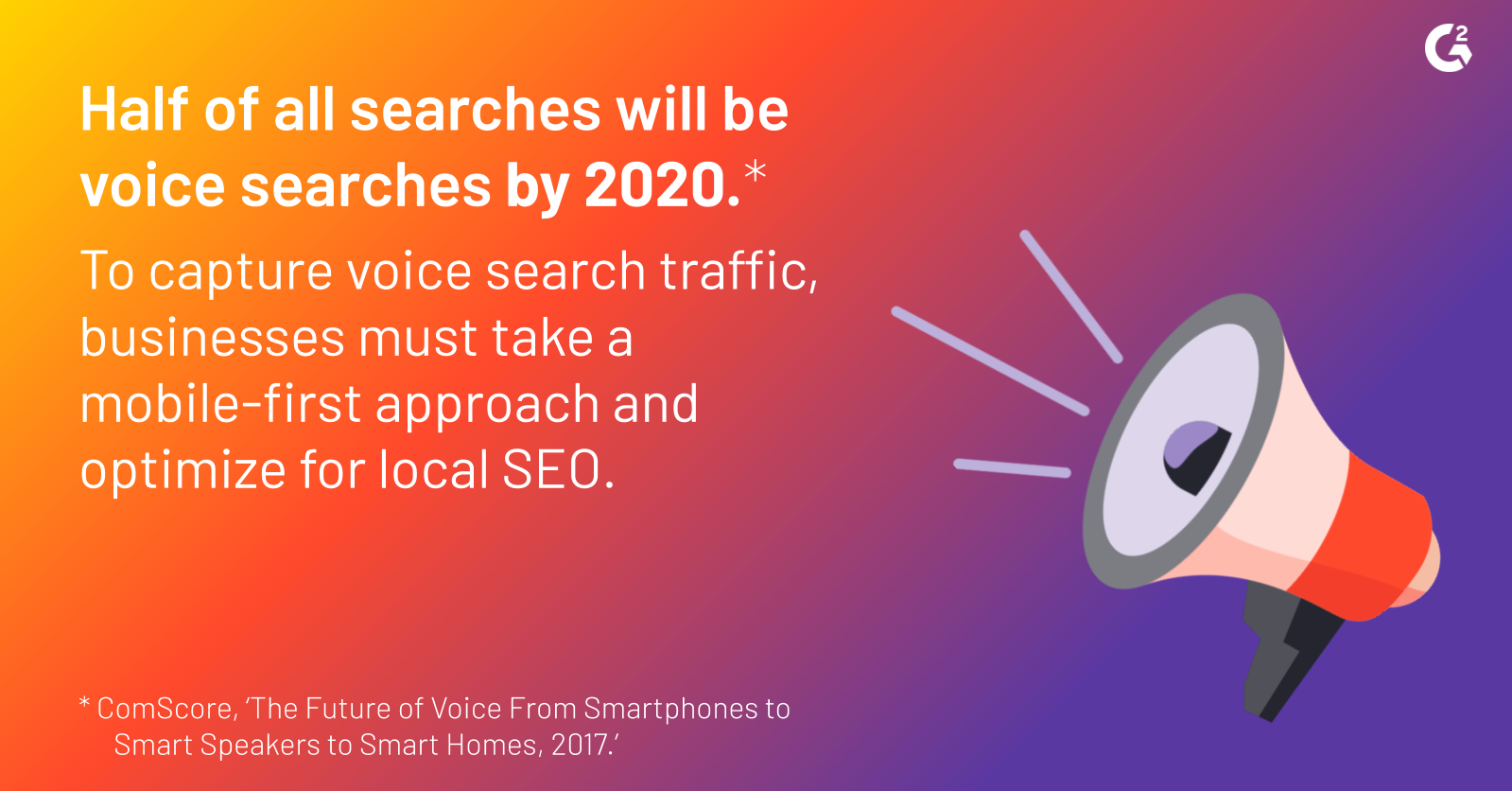This post is one part of G2's 2020 digital trends series. Read more about G2’s approach to digital transformation trends in an introduction from Michael Fauscette, G2's chief research officer.
Social media and search marketing trends for 2020
Every brand faces the challenge of standing out in a crowded landscape, and every marketer knows it’s their responsibility to seek out innovative ways to differentiate their brand from the competition. To that end, social media and search engine optimization (SEO) are valued by marketers for their ability to improve brand awareness. In 2020, these strategies will see major shifts to focus on brand loyalty and trust, personalization, and customer experience.
A new generation of consumers is emerging, and studies show Gen Z is more resistant to advertising than their predecessors. In 2020, we’ll likely see B2C marketers leverage new technologies and channels to reach younger, tech savvy, and more discerning audiences. Although the B2B world doesn’t have to worry about targeting Gen Z quite yet, 2020 will see B2B marketers following in the footsteps of several major B2C marketing trends.
Influencer marketing spend will increase in B2C and B2B
Last month, I explored the rise of influencer marketing, as well as its impact on building brand awareness and trust. In spite of the occasional scandal and instances of fraud, influencer marketing is a powerful marketing tactic that isn’t going anywhere. Unsurprisingly, B2C marketers will continue to increase their spending on influencer campaigns in 2020. Realizing the success of influencer marketing for the B2C sector, B2B brands will adopt and tweak this practice for their own purposes.
Influencer marketing has grown exponentially over the last three years. According to Influencer Marketing Hub, the industry grew from $1.7 billion in 2016 to $6.5 billion in 2019. Earlier this year, the outlook for influencer marketing was bright. A survey from Mediakix revealed nearly two-thirds of marketers planned to increase their influencer marketing budget in 2019, and 89% said ROI from influencer marketing is comparable or better than other marketing channels.

Source: Influencer Marketing Hub
Overall, marketers agree that influencers aren’t a fad. When influencer marketing started gaining traction in 2017, it was common for brands to partner with big celebrities and household names. Of course, this is an unsustainable—and often unattainable—strategy for many businesses. As a result, nano- and micro-influencers will drive much of the growth in influencer marketing next year. These small-scale influencers are often regular people who have crafted niche, engaged, loyal fanbases.
With the rise of the micro-influencer and increasing evidence of influencers’ massive impact on ROI, B2B will likely jump on the bandwagon. However, what works for B2B won’t be a carbon copy of a successful B2C campaign. Instead of sponsoring posts on social media, B2B marketers focus on increasing customer advocacy programs and co-creating content with influencers.
Want to learn more about Social Media Marketing Software? Explore Social Media Marketing products.
More social media platforms will use AI to prevent fraud
Transparency and authenticity are key to a successful social campaign. If consumers can’t trust the content they see, then the campaign won’t have the desired impact and it will be a wasted investment. As more businesses adopt social media as a major channel for digital marketing, social platforms will be forced to address the issue of fraud, such as bots and sellers of fake social engagement.
In October, the United States Federal Trade Commission (FTC) issued a landmark decision when they fined the CEO of a company called Devumi over the sale of “fake indicators of social media influence.” Devumi had been the subject of a New York Times investigation on social media fraud, revealing the company had collected millions of dollars by selling Twitter followers and retweets to a range of clientele, including celebrities, athletes, and businesses.
At the same time, the FTC filed a complaint against skin care brand Sunday Riley, accusing the company of posting fraudulent reviews of their products on Sephora’s website. In a dissenting statement against the FTC’s no-money, no-fault order, Commissioner Rohit Chopra argued that the United States should follow the lead of the United Kingdom, Canada, and Australia, which have a history of implementing harsher punishments for fake reviews.
According to a survey from Mediakix this year, half of influence marketers said their #1 concern is spotting fake followers and inauthentic engagement. With social media fraud continuing to make headlines, we expect a vigorous call for platforms to alleviate the issue. Most networks, including Facebook, Twitter, and Instagram, already prohibit fraudulent or misleading behavior in their policies. This isn’t enough. In 2020, social media platforms will start to leverage AI to institute new safeguards against bots and artificial engagement. Twitter is already working on a new checkmark to label bots on the platform.

We will also see marketing tools, especially influencer marketing platforms, implement and promote machine learning features that detect fake engagement, helping brands spend their influencer marketing dollars more wisely.
E-commerce brands will create more shoppable content
Marketing professionals have been talking about the importance of personalization for years. 80% of consumers are more likely to purchase a product or service from a brand that offers personalized experiences, according to a 2018 report from Epsilon.
-1.png)
Advances in artificial intelligence and machine learning algorithms make it easier than ever to create these personalized experiences, and social media platforms are helping brands deliver these experiences through shoppable content.
Shoppable content is any type of digital content that enables consumers to directly purchase a product through a piece of content, such as an image, social post, article, or video. Shoppable content simplifies and streamlines the consumer’s path to purchase, and allows brands to monetize content across channels.
In 2018, Instagram rolled out their shoppable posts feature to the rest of the world, giving brands the ability to tag products in their posts so consumers could make a purchase without leaving the platform. Early adopters of the feature saw a significant ROI, with huge gains in both traffic and revenue.
Not long after, Snapchat introduced their Shoppable Snap Ads, a similar feature which allows e-commerce businesses to import a product catalog and automatically create shoppable ads. More recently, the platform announced a new option for creating dynamic ads. This new offering brings automated personalization to the table, as the ads will be continuously tailored to customers’ interests.
As we continue to see growth in AI-assisted personalization, shoppable content will become increasingly desirable for optimizing e-commerce revenue.
Businesses that optimize for voice and visual search will see a boost in traffic
PREDICTION:
Businesses that optimize their websites for voice and visual search in 2020 will increase traffic by 25%.
Voice search is another trend marketers have been talking about the past few years, yet a majority of businesses aren’t making it a priority to optimize for this new technology. Only 4% of businesses with offline locations met the criteria for voice-search readiness, according to a 2019 analysis conducted by Uberall. One reason for this could be a lack of understanding about optimizing voice search and how it impacts SEO. Some businesses may even feel reluctant to invest resources in a new and untested strategy. With a relatively even playing field, early adopters of voice and visual search optimization will be rewarded with a noticeable traffic boost in 2020.
Why should marketers still care about voice search? With continuous improvements in speech recognition and consumers’ increasing adoption of IoT, the use of voice search will become even more prevalent. It’s estimated that by 2020, 50% of all searches will be voice searches. To capture the traffic from these searches, businesses must tailor their SEO strategies to consider voice search. This means making sure their website is mobile-ready and, for local businesses, optimizing for local SEO. B2B companies shouldn’t ignore this trend either: Nearly half of searchers use voice search in the office.

Visual search, while a relatively newer technology, is poised to transform the e-commerce industry. Mobile shopping continues to grow among younger generations. A recent study from ViSenze found that 62% of Gen Z and Millennial consumers want visual search capabilities more than any other new technology. In 2020, we’ll see online retailers rise to meet that demand.
New solutions for small businesses will lead to an increase in martech spending
PREDICTION:
New products and services aimed at small businesses will contribute to a 55% increase in small business martech spending in 2020.
Martech spending is down in 2019, but there are indications that businesses, especially small businesses, will have reason to increase their marketing budgets next year.
Gartner's annual survey of CMOs found that martech and agency spending were down this year compared with 2018, while spend on in-house labor is up. This decline may be partly attributed to the results from last year’s survey, when marketers reported using 61% of the functionality available in their martech portfolio. Many marketing departments are likely focusing on fully utilizing the tools they have and building up their in-house capabilities to lessen their dependence on agencies. In the survey, marketers indicated that data and analytics are a top priority for future investments.
In recent months, we’ve seen several vendors announce new marketing solutions aimed at small businesses, including new conversation channels in Salesforce Essentials and integrated social and search tools from Constant Contact. These offerings make it easier for small businesses to interact with customers and deliver marketing content across multiple channels. Previously, expensive all-in-one marketing platforms were restricted to enterprise vendors, but advances in technology now make it possible for small businesses to take part.
We expect to see SaaS platforms continue to expand their offerings for small businesses, enabling growing companies to manage their advertising, email marketing, social media, and even customer service through a single platform. These cost-effective solutions will contribute to a greater number of small businesses investing in martech.
Explore the highest-rated software in related categories:

Stephanie Graham
Stephanie is a Market Research Manager and Senior Research Analyst at G2 concentrating on marketing and digital advertising software. Prior to joining G2, Stephanie spent four years in B2B marketing and event management at an independent publishing company. This experience nurtured her passion for understanding how technology can help solve the unique challenges small businesses face today. Stephanie’s areas of interest include brand perception, customer experience, SEO, and local marketing. She received her BA in journalism and Spanish from Marquette University and in her spare time enjoys reading, gaming, and trying new vegetarian restaurants.
